LIFEBOAT STATION
3 GRIFFITHS STREET PORT FAIRY, MOYNE SHIRE
-
Add to tour
You must log in to do that.
-
Share
-
Shortlist place
You must log in to do that.
- Download report










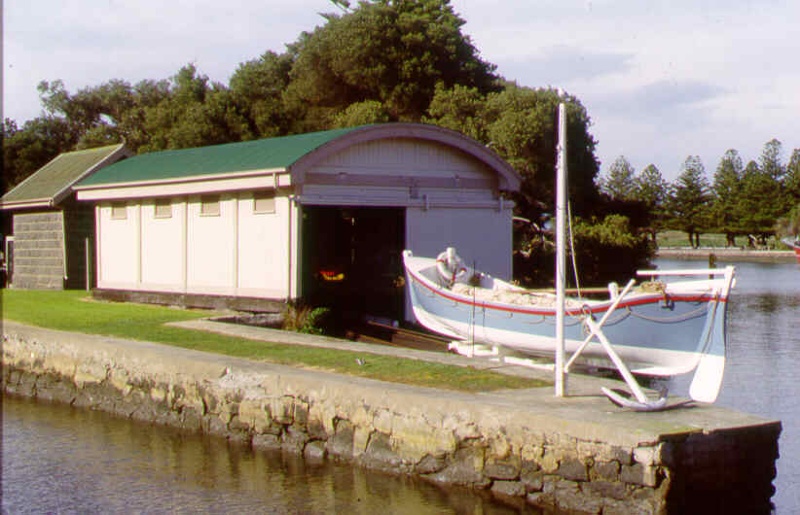
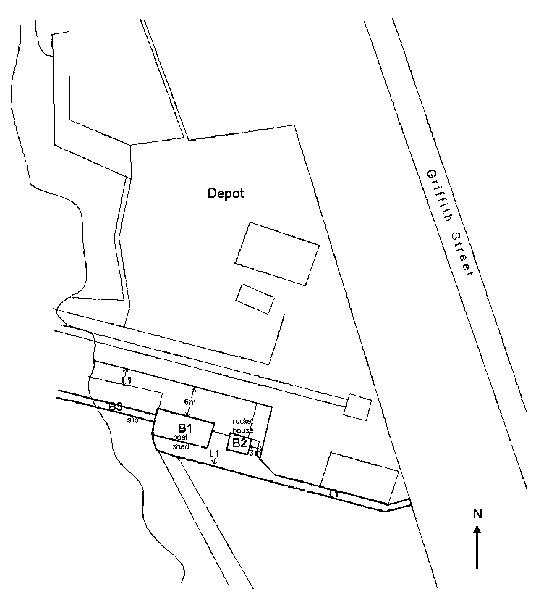
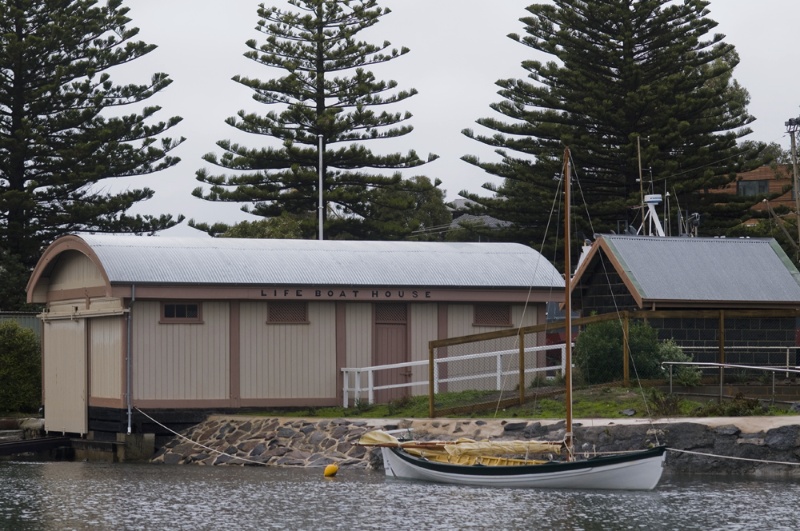

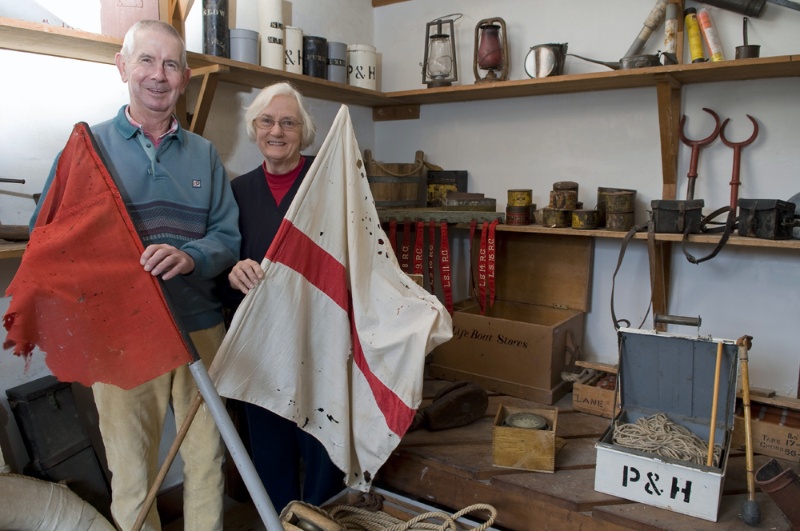
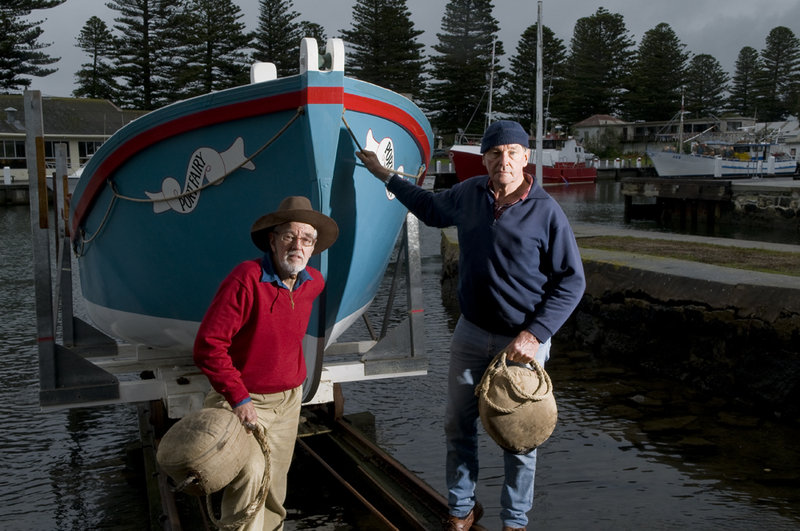
Statement of Significance
What is significant?
The Port Fairy lifeboat was built at Williamstown in 1857. The design and construction is possibly by William White, an emigrant member of the well-known family of Cowes boat-builders. The design differs from the plans of the James Peake design, provided by the Royal national Lifeboat Institution, which arrived after his lifeboat had been delivered to Port Fairy in September 1857. It was originally moored at the Government wharf on the river Moyne. In 1861 a cantilevered boat house to house the lifeboat was built on East Beach jetty. The jetty was poorly positioned and was abandoned in about 1873 and the shed moved to its present position on the east bank of the river. The rocket crew was in practice in 1860 and the rocket house was built in 1886 by James. Bolger for the Public Works Department. The lifeboat is 30 feet in length and built of kauri planks, laid diagonally to provide excellent strength. It carried a complement of 10 oarsmen, 2 sweep oars, a bowhand and coxswain, and could carry 24 survivors. The lifeboat shed is timber framed with a wrought iron bow truss roof and vertical weather boards affixed in four panels to the sides between massive timber posts. Metal faced wooden double doors are situated at the west end. The rocket house is a simple bluestone building about 15 feet x 13 feet, with gabled roof and wooden double doors. The stonework is plain but finely worked with regular coursing, contrasting corner stones and a two course projecting base. The lifeboat shed and rocket house contain a large amount of rescue equipment which has been on site continuously from its functioning days as a lifeboat station.
How is it significant?
The Port Fairy Lifeboat Station is of historical, technical and architectural significance to the State of Victoria.
Why is it significant?
The Port Fairy Lifeboat station is of historical importance as a rare and remarkably intact reminder of the important role of local oared lifeboats with volunteer crews in the days of hazardous sail-powered coastal shipping. It has a strong historic association with the economic importance of coastal shipping to Port Fairy in the 19th century, before this trade was largely destroyed by the spread of railways. The lifeboat in association with the 1861 boat shed built to house it and the 1886 rocket shed with hand rescue equipment, form an exceptional collection of artefacts and structures, which represents a specialised maritime industry. The lifeboat is believed to be the oldest self-righting lifeboat in the world and is directly related to the beginnings in Britain, of specialised lifeboat design. This is the only early lifeboat surviving in its original context and location in Victoria.
The lifeboat has considerable technological interest, as it has innovative design features produced from an 1851 lifeboat design competition, which were recognised as a great advance at the time. Built of double Kauri planks, laid diagonally from gunwale to gunwale; it can self right within three seconds after capsize and contains six self draining valves, allowing all inboard water to be drained within sixty seconds. The rocket house is one of a very few such buildings surviving in the state and reflects the advances in sea rescue techniques in the late nineteenth century, particularly in the method of passing a line to ships in distress by rocket.
The lifeboat shed and rocket house are of architectural importance as fine intact examples of rare building types.
See 2008 Site Monitoring Event and initial survey (attachment) for further details of the collection.
-
-
LIFEBOAT STATION - History
Contextual History:
Coastal Shipping provided the first communication and transport between early colonial settlements in Australia. Immigrant ships, particularly during the gold rushes, took great risks in negotiating the unprotected ports. The Royal National Lifeboat Institution having recently been established in Great Britain forwarded plans to the 5 Australian colonies in 1857 to allow local construction of a safe rescue craft. Due to the loss of 95 ships and 162 human lives from shipwreck on the Victorian coast between 1835 and 1858, the Victorian Government had 3 of these lifeboats built at Williamstown. The high incidence of shipping accidents at Port Fairy in the days of sail (because of the exposed bay and the un-navigable river mouth) meant that the port was given one of the first three such boats at Williamstown. The other two were sent to Portland and Queenscliff. The lifeboat at Portland also still survives.
History of Place:
The Lifeboat
The Port Fairy lifeboat was built at Williamstown, Victoria, in 1858. The design was provided by the British Royal Naval Lifeboat Institute, and sent to five Australian colonies in 1857 to allow local construction of safe rescue craft. The design was by James Peake, of Her Majesty’s Dockyard, Woolwich and was based on the 1851 Duke of Northumberland’s Lifeboat design competition winning plan of James Beeching (Gary Vines NT). It featured planks laid diagonally from one gunwale to the other giving extra strength, six patent valves to drain shipped water, and exceptional buoyancy-in tests the boat righted itself in three seconds. It measured 30 feet in length and carried a complement of 10 oarsmen, 2 sweep oars, a bowhand and coxswain, and could carry 24 survivors. The boat was delivered in 1858. It was maintained by the Department of Ports and Harbours and manned by a crew of 14 volunteers from the local community. Local fishermen and lightermen formed the volunteer crew of 14 who were paid an appearance sum and regularly launched the boat and practiced rescues. At first it was moored by the Government Wharf in the river Moyne, but in 1861 a jetty with cantilevered boatshed was built on East Beach. The boat was little used, because the crew usually preferred a smaller portable whaleboat and the location of the jetty was inconvenient. The opportunity for vessels to negotiate the river mouth from the 1870s also greatly lessened the risk of wrecks. Although it was used for few shipping accidents the service was only discontinued after the last steamer called at Port Fairy in the late 1930s. (Gary Vines NT). The boat lay forgotten in the shed until the 1950s, when for a while it was used with the Warrnambool lifeboat to form a catamaran pontoon for a river dredge. After that it was left as a park ornament until the restoration project of recent years. Correspondence with the Royal National Lifeboat Institution suggests that the Portland and Port Fairy boats are the oldest lifeboats surviving in the world. (Australian Heritage Commission).
The Lifeboat Shed
The lifeboat shed was built in 1861 when a contract was let by the Public Works Department to contractor Cooper at a cost of £389.50. The design appears to be a standard one. The shed was originally built on a jetty on East Beach, but the jetty was poorly positioned and was abandoned in about 1873, at which time the shed was moved to its present position on the east bank of the river. The surviving drawings dating from this move are signed by PWD architect H.W. Steel, who may also have been responsible for the similar building (fishermen’s Co-op) on the west bank and other harbour works and jetties from the 1850s onward (Gary Vines NT).
The Rocket House
The rocket crew was established in 1871 and the rocket house was built in 1886 by D. Bolger for the Public Works Department at a cost of £296.2.9. Around the same time similar buildings were built at Point Lonsdale, Portland, and a portable shed at Sorrento. The Portland building is almost identical to the Port Fairy building. The Point Lonsdale Building is of brick. The Sorrento building does not survive. The Port Fairy rocket crew were in operation until the mid 1960s (Gary Vines NT).
Associated People: James Peake-designed the lifeboat.LIFEBOAT STATION - Plaque Citation
The self-righting, self-draining lifeboat was delivered to Port Fairy in 1857, the lifeboat house in 1861 (relocated here in 1873) and the Rocket House in 1886. The only nineteenth century lifeboat collection in Australia, it operated until 1941.
LIFEBOAT STATION - Assessment Against Criteria
Criterion A
The historical importance, association with or relationship to Victoria's history of the place or object.
The Port Fairy Lifeboat station is of historical importance as a rare and remarkably intact reminder of the important role of local oared lifeboats with volunteer crews in the days of hazardous sail-powered coastal shipping. It has a strong historic association with the economic importance of coastal shipping to Port Fairy in the 19th century, before this trade was largely destroyed by the spread of railways.
Criterion B
The importance of a place or object in demonstrating rarity or uniqueness.
The lifeboat in association with the 1861 boat shed built to house it and the 1886 rocket shed with hand rescue equipment, form a rare collection of artefacts and structures. The lifeboat is believed to be the oldest self-righting lifeboat in the world and is directly related to the beginnings in Britain, of specialised lifeboat design. This is the only early lifeboat surviving in its original context and location in Victoria.
Criterion C
The place or object's potential to educate, illustrate or provide further scientific investigation in relation to Victoria's cultural heritage.Criterion D
The importance of a place or object in exhibiting the principal characteristics or the representative nature of a place or object as part of a class or type of places or objects.
The lifeboat in association with the 1861 boat shed built to house it and the 1886 rocket shed with hand rescue equipment, form an exceptional collection of artefacts and structures, which represents a specialised maritime industry.
Criterion E
The importance of the place or object in exhibiting good design or aesthetic characteristics and/or in exhibiting a richness, diversity or unusual integration of features.
The lifeboat shed and rocket house are of architectural importance as fine intact examples of rare building types.
Criterion F
The importance of the place or object in demonstrating or being associated with scientific or technical innovations or achievements.
The lifeboat has considerable technological interest, as it has innovative design features produced from an 1851 lifeboat design competition, which were recognised as a great advance at the time. Built of double Kauri planks, laid diagonally from gunwale to gunwale; it can self right within three seconds after capsize and contains six self draining valves, allowing all inboard water to be drained within sixty seconds.
Criterion G
The importance of the place or object in demonstrating social or cultural associations.Criterion H
Any other matter which the Council considers relevant to the determination of cultural heritage significanceLIFEBOAT STATION - Permit Exemptions
General Exemptions:General exemptions apply to all places and objects included in the Victorian Heritage Register (VHR). General exemptions have been designed to allow everyday activities, maintenance and changes to your property, which don’t harm its cultural heritage significance, to proceed without the need to obtain approvals under the Heritage Act 2017.Places of worship: In some circumstances, you can alter a place of worship to accommodate religious practices without a permit, but you must notify the Executive Director of Heritage Victoria before you start the works or activities at least 20 business days before the works or activities are to commence.Subdivision/consolidation: Permit exemptions exist for some subdivisions and consolidations. If the subdivision or consolidation is in accordance with a planning permit granted under Part 4 of the Planning and Environment Act 1987 and the application for the planning permit was referred to the Executive Director of Heritage Victoria as a determining referral authority, a permit is not required.Specific exemptions may also apply to your registered place or object. If applicable, these are listed below. Specific exemptions are tailored to the conservation and management needs of an individual registered place or object and set out works and activities that are exempt from the requirements of a permit. Specific exemptions prevail if they conflict with general exemptions. Find out more about heritage permit exemptions here.Specific Exemptions:General Conditions:
1. All exempted alterations are to be planned and carried out in a manner which prevents damage to the fabric of the registered place or object.
2. Should it become apparent during further inspection or the carrying out of alterations that original or previously hidden or inaccessible details of the place or object are revealed which relate to the significance of the place or object, then the exemption covering such alteration shall cease and the Executive Director shall be notified as soon as possible.
3. If there is a conservation policy and plan approved by the Executive Director, all works shall be in accordance with it.
4. Nothing in this declaration prevents the Executive Director from amending or rescinding all or any of the permit exemptions.
Nothing in this declaration exempts owners or their agents from the responsibility to seek relevant planning or building permits from the responsible authority where applicable.
Exterior
* Minor repairs and maintenance which replace like with like.
* Removal of any extraneous items such as air conditioners, pipe work, ducting, wiring, antennae, aerials etc, and making good.
* No permit is required for maintenance of cradle and winch to ensure their continuing operation.
* No permit required for works related to continuing operation of the slip.
* No permit required for storage of material on site, provided that it does not put the registered structures at risk of damage.
Interior
* Painting of previously painted walls and ceilings provided that preparation or painting does not remove evidence of the original paint or other decorative scheme.
* Removal of paint from originally unpainted or oiled joinery, doors, architraves, skirtings and decorative strapping.
* Installation, removal or replacement of electrical wiring provided that all new wiring is fully concealed and any original light switches, pull cords, push buttons or power outlets are retained in-situ. Note: if wiring original to the place was carried in timber conduits then the conduits should remain in-situ.LIFEBOAT STATION - Permit Exemption Policy
The main importance of the Port Fairy Lifeboat Station lies in its intactness as a complex, including rocket house, lifeboat, lifeboat shed, slip and the associated objects. All of these elements are of prime importance and should be retained as a complex. The setting and understanding of these buildings as a whole should be protected. The rocket house, lifeboat and lifeboat shed are all rare and particularly intact examples of their type. They are important for their representative nature in form and interior/exterior detail. The port is still in operation and it is important that any works to be carried out on land included in the extent also take this continuing use into consideration.
-
-
-
-
-
EMOH
 Victorian Heritage Register H0252
Victorian Heritage Register H0252 -
GUNS AND EMPLACEMENTS
 Victorian Heritage Register H1504
Victorian Heritage Register H1504 -
PORT FAIRY COURT HOUSE
 Victorian Heritage Register H1480
Victorian Heritage Register H1480
-
'CARINYA' LADSONS STORE
 Victorian Heritage Register H0568
Victorian Heritage Register H0568 -
1 Alexander Street
 Yarra City
Yarra City -
1 Botherambo Street
 Yarra City
Yarra City
-
-












